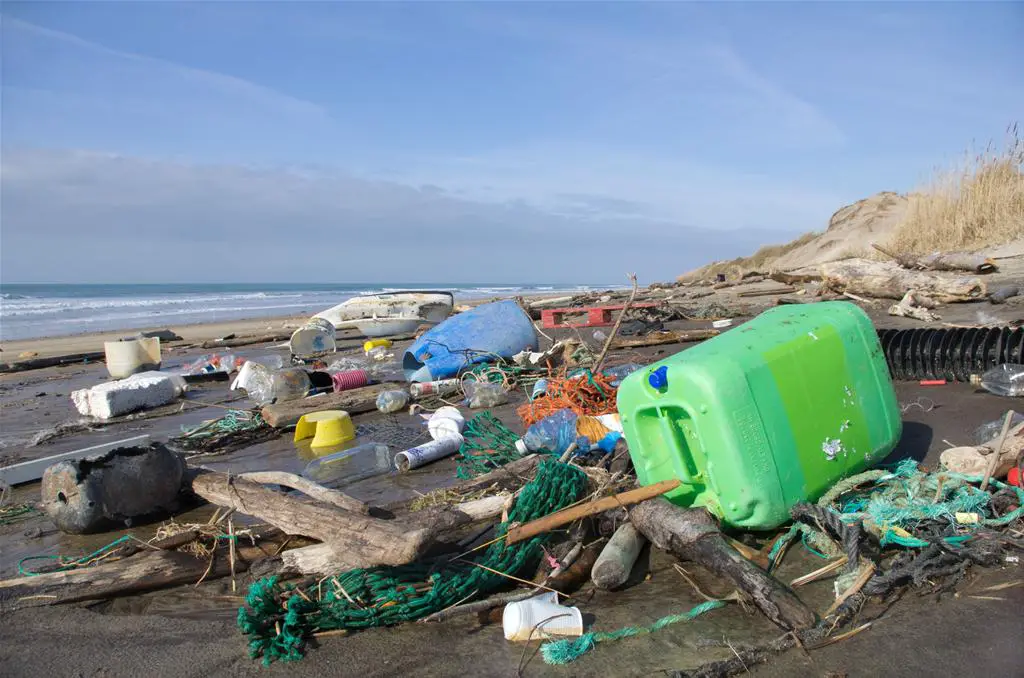Awareness
Plastic-Eating Bacteria Discovered in Japan Could Solve the Problem of Plastic Pollution

Till recently, plastic was thought to be resistant to all known species of bacteria due to its chemical structure. Plastic consists of so-called polymers, or large chains of repeating molecules. Their size is far greater than the one of an individual bacterium, which makes it impossible for the microbes to metabolize plastic.
Yet, researchers have recently detected a bacterium that can actually consume plastic, in particular, polyethylene terephthalate or PET, one of the most popular types of plastic that is widely used in bottles, food packaging and clothing. This new species of bacteria was called Ideonella sakaiensis, after the Japanese city of Sakai where it was found.
A group of Japanese researchers looked through numerous debris fields with PET pollution and eventually discovered a colony of bacteria growing on plastic waste and using it as a food source.
“It’s the most unique thing. This bacterium can degrade PET and then make their body from PET,” Shosuke Yoshida, a microbiologist at Kyoto University and lead author of the study, told NPR.
How is this even possible, considering the above-described difference in the size of bacteria and polymers? The trick is that Ideonella sakaiensis has two enzymes capable of breaking the molecular bonds in the plastic polymer so that the bacterium can then metabolize the pieces and convert them into water and carbon dioxide.
Sounds really promising, doesn’t it? Why not spray these plastic-eating bacteria around debris fields and let them eat all these horrific mountains of plastic waste? Well, it could be done, but the problem is that Ideonella sakaiensis eats too slowly. For the purpose of the study, which was published in the journal Science, Yoshida and his team conducted an experiment in which the isolated bacterium almost completely degraded a plastic film in around six weeks.
It seems that nature itself is working on finding a way to neutralize the pollution caused by human activity and is evolving microorganisms capable of that. Scientists believe that such rapid evolution takes place thanks to the incredible ability of microbes to adapt to the surrounding conditions. As Enzo Palombo, a professor of microbiology at Swinburne University, told The Guardian, “If you put a bacteria in a situation where they’ve only got one food source to consume, over time they will adapt to do that.”
Moreover, there may already exist newly evolved species of bacteria that are yet to be discovered. In fact, Ideonella sakaiensis is not the first living organism that was found to feed with plastic. In 2014, a group of researchers detected a plastic-eating species of fungi in the rainforest of Ecuador.
“I would not be surprised if samples of ocean plastics contained microbes that are happily growing on this material and could be isolated in the same manner,” Palombo said.
Whether scientists will ever use Ideonella sakaiensis to neutralize the existing plastic pollution or not, it is obvious that the Mother Nature is actually starting to fight back against all this harm we have done and are still doing to it. Considering the millions of years of evolution and adaptation of life on Earth, it has all the chances to win this battle. And if we don’t change our attitude towards other living creatures and our planet as a whole, one day nature may find a way to neutralize us.
Typos, corrections and/or news tips? Email us at Contact@TheMindUnleashed.com
